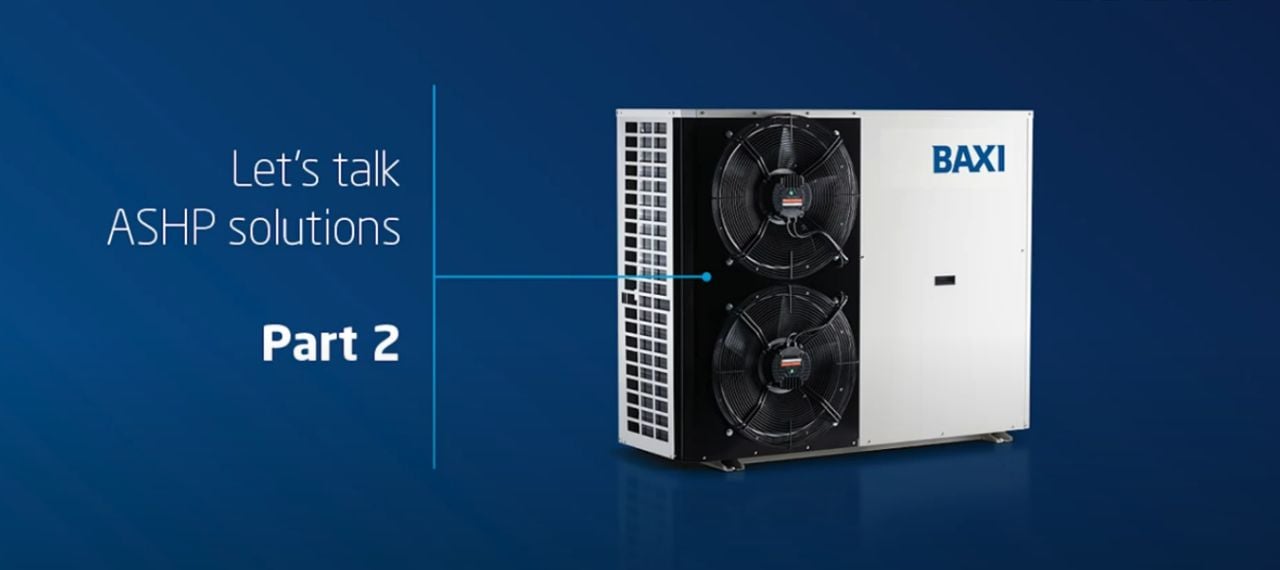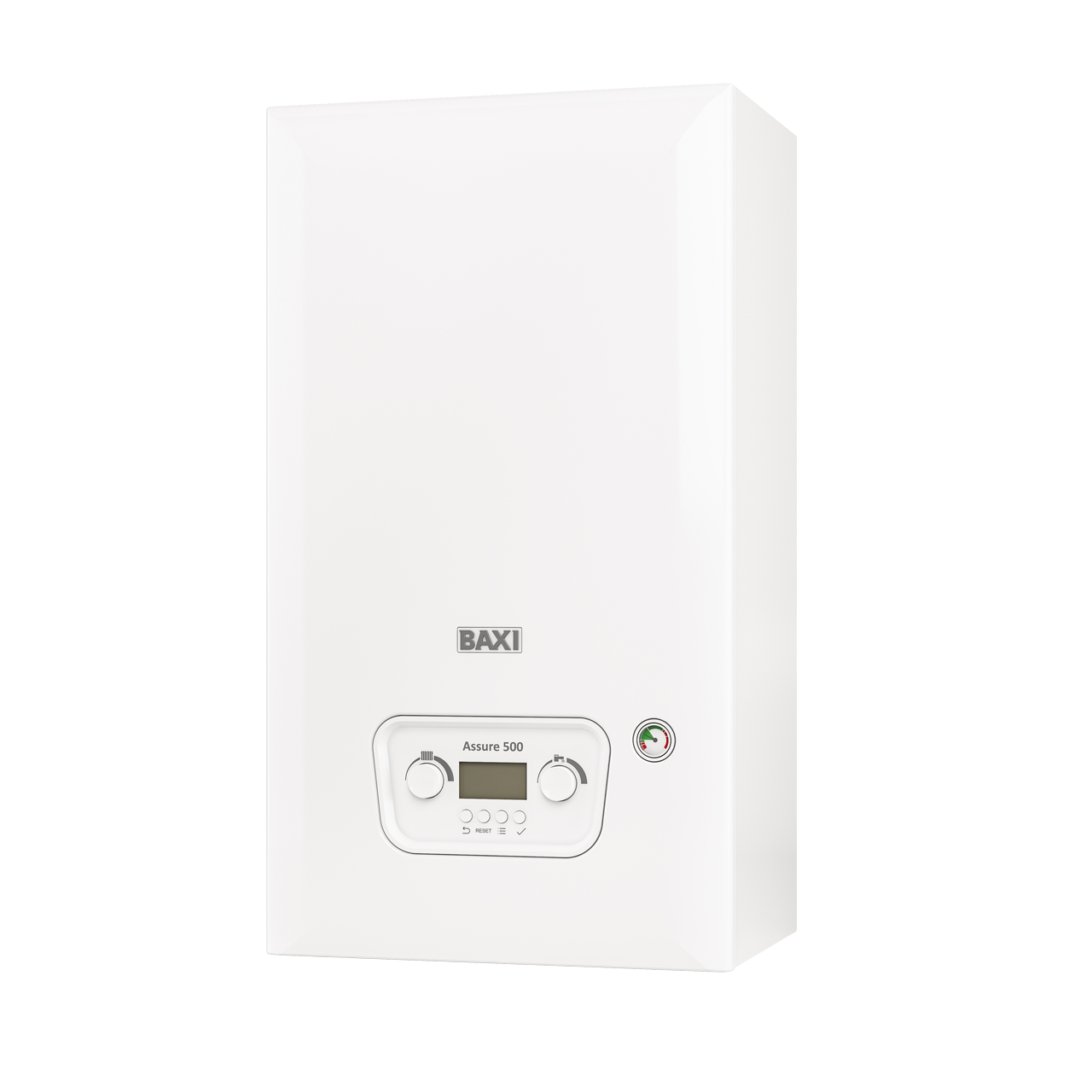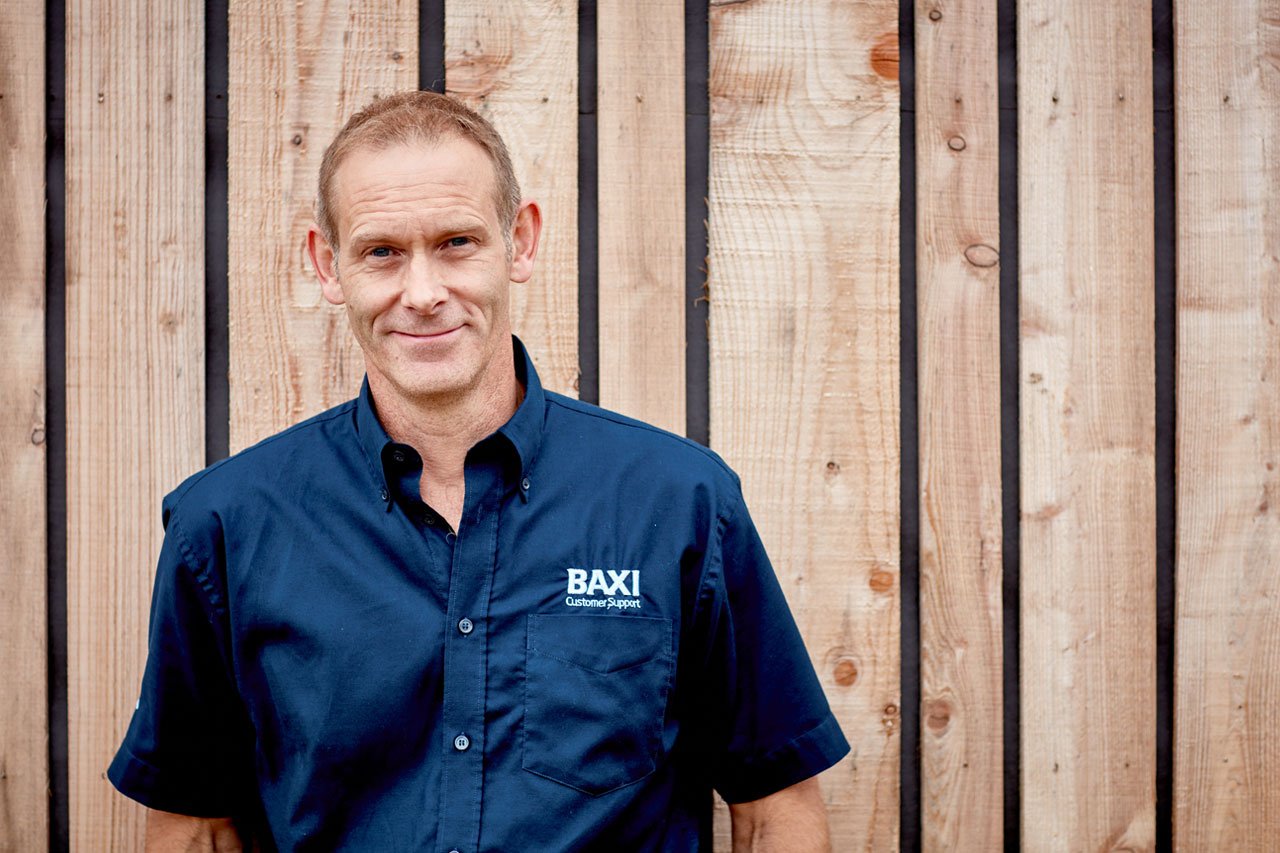
Let's Talk ASHP Solutions - Part 2
Ryan Kirkwood, Engineering Solutions Manager, discusses the challenge of decarbonising heating in existing buildings, hybrid solutions and the Fabric First approach.
What solutions can be implemented to overcome the challenges of decarbonising heating in existing buildings?
Decarbonising heating in existing buildings is a huge challenge.
When a building owner starts to look at this option, then a hybrid solution is nearly always a fast, efficient and affordable answer. A hybrid system can enable a large portion of the heat to be decarbonised while overcoming some key challenges such as budget and risk.
If a business or building owner is looking for quick sustainability improvements, a hybrid solution is often the best way forward.
Swapping boilers for heat pumps is completely possible, but not to be trivialised. It can be a very time consuming and resource-draining exercise.
Both well designed hybrids and replacement projects require a significant amount of investigation to understand the system fully to ensure best performance and value.
Sometimes the options can feel overwhelming. At Baxi, our experts can help break down the process step-by-step to ensure all options are explained plainly, openly and honestly so the right decision can be reached in each circumstance.
Why is it important to understand the existing system in full when retrofitting heat pumps in a standalone or hybrid system?
Understanding the system in full before designing a hybrid or standalone air source heat pump (ASHP) system is absolutely key to ensuring project success.
In order to do this, we need to know the actual heating demand at a system circuit level, not just the total installed capacity of the current heat generation plant. We need to understand how the building lives and breathes.
Considerations include how the heat is currently distributed throughout the building, the fabric make-up of the building, what the property is used for and hardware such as radiators.
When we have real measured data, we can engineer different solution scenarios.
This optioneering allows clients and designers to make the best choice given any bounding constraints the project may have, such as electrical capacity, physical space or budget.
This also helps to set out key performance indicators and targets once the project is complete. We can then use those metrics to understand how the building is performing year-on-year. Once we have that data and KPIs have been hit, we can then start to make additional improvements to the solution for greater savings. It helps us to improve our designs in the future.
What are some of the key data points required to design a successful heat pump or hybrid solution?
Some of the metrics or information that are required to design a successful heat pump or hybrid solution are:
- What was the original design temperature and loads?
- Is there any load data for winter, summer and shoulder months available?
- Are there any bounding spatial constraints that cannot be changed, such as the total space available?
- Does budget allow for 100% of the required heating power to be via ASHPs?
- Are electrical capacities sufficient?
Unless you know as much data as possible, it’s very difficult to design a successful heat pump or hybrid solution. It’s also important to know whether the comfort levels are good enough at the moment or if there are issues in the building.
The constraints of a building are either bound or non-bound. Bounded constraints cannot be changed and could be something as simple as physical space. Non-bounded constrainers, or negotiable bounds, are considerations such as electrical capacity. Could more electrical capacity be yielded from a grid supplier, for example?
Understanding the constraints helps our experts at Baxi with the optioneering and helps us to align a solution that works for that specific building.
What do we mean by Fabric First? What happens when it’s not possible?
We all know that all too familiar phrase “Fabric First”. In architecture it simply means to design with good thermal efficiency in mind, to ease the burden of heating and cooling plant, specifically with renewables.
In the context of existing buildings, when we say Fabric First, we are really asking what can be done to the thermal envelope to reduce heat loss.
Reducing heat loss can significantly reduce the size or capacity of plant required while improving running costs by limiting heat loss to the environment.
Buildings can lose heat with air filtration, also known as a leaky building. It can also be lost throughout the building fabric so sometimes improving insulation can make a huge difference.
Challenges arise in older buildings, or even listed buildings, where it’s just not feasible to improve the fabric. That is when other options must be considered.
In these situations, we have to try and offset those inefficiencies by having complementary technologies. For example, heat pump running costs may increase due to a leaky building that can’t be fixed to a satisfactory point, but we can offset that inefficiency by having on-site electricity generation through equipment such as photovoltaics (PVs).
How can Baxi support designers, building owners, contractors etc?
At Baxi, we want to support all our customers in their journey to decarbonise heat. We are delighted to assist building owners, installers, designers and contractors.
We want to open source our knowledge as much as possible. We don’t just manufacture products - we design industry leading solutions.
We work hand in hand with customers to break down the complexities associated with decarbonisation. We believe our experience and expertise, in both new-builds and retrofits, is our strength.
We stand shoulder to shoulder with designers and engineers as they work through the challenges each project brings. And we support heating engineers by providing clear, concise and pragmatic solutions that are easy to install, service and maintain. We don’t want to make a system that is so complex it can never be improved upon or serviced, so simplicity is always the goal.
We would be delighted to offer advice over the phone or to visit the project site to discuss options.
Baxi Auriga Air Source Heat Pump
The Baxi Auriga air to water Air Source Heat Pump (ASHP) is perfect for commercial applications in both fully electric and hybrid heating systems.
Let's talk Air Source Heat Pump Solution Series
Get More
Sign up to 'get more' from across all the Baxi brands - Remeha, Andrews Water Heaters, Potterton Commercial and Heatrae Sadia. Including being the first to know about new products and services, industry legislation, promotions and more!




